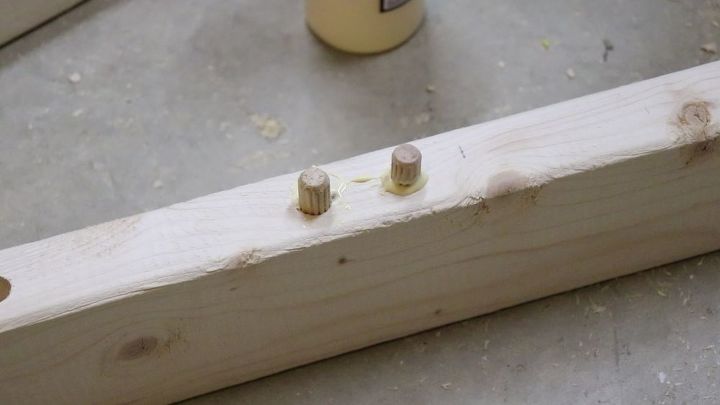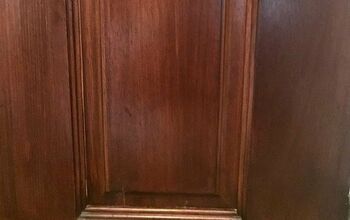How to Build a Simple Planter Box

by
Zachary
(IC: vlogger)
4 Materials
$100
6 Hours
Medium
This video shows how I build a simple planter box for growing summer vegetables on my back patio.
I used regular (not pressure treated) pine from the home improvement store. I only used 2x4, 1x8, and 1x4, as well as some 3/8 inch plywood for the bottom.
https://www.youtube.com/subscription_center?add_user=zthipps
{
"id": "4032368",
"alt": "",
"title": "",
"video_link": "https://www.youtube.com/embed/NK32GvuLyuI",
"youtube_video_id": "NK32GvuLyuI"
}
{
"width": 634,
"height": 357,
"showRelated": true
}
My wife has been wanting to grow her own vegetables and herbs for a long time, but living in an urban environment can make it difficult to find an outdoor space with enough sunlight to sustain a garden. Planter boxes are a great alternative to traditional ground based gardens because they allow us to grow our own food when ground space is limited or doesn't exist.
Last year we moved into a town home with a large enough patio to accommodate a couple of planter boxes. I had never built a planter box, but was confident enough in my skills that I decided to build one. I looked online for inspiration and came across several designs that I liked. I wasn't worried about dimensions because the length, width, and height could easily be adjusted to fit my needs. If you want this planter box to last a long time in the elements, I would recommend using pressure treated lumber. I decided to use 2"x4" lumber for the four legs and connecting members, and 1"x8" lumber for the siding. Some 3/8" plywood would work for the bottom, and I'd finish it off with some 1"x4" material for some trim.
Cut list:
(4) 2"x4" by 22"
(2) 2"x4" by 63-1/2"
(2) 2"x4" by 19-1/2"
(4) 1"x8" by 72"
(4) 1"x8" by 24"
(8) 1"x4" by 14-1/2"
(2) 1"x4" by 72"
(2) 1"x4" by 24"
(1) 3/8" by 24"x72"
Step 1: Basic Frame
I started out by cutting a 2"x4" into four 22" pieces on the miter saw. These will be the four vertical legs. Then I cut two pieces at 63-1/2" and two pieces at 19-1/2". These will connect our four legs together. You should be able to cut all of these pieces from three 8' boards.
Next I joined two legs with a 63-1/2" by drilling holes and using 1/2" dowels. This forms one of the long sides of the planter box. This is where I made a mistake. As I was measuring the placement for the holes I assumed that the 1"x8" siding was indeed 8 inches wide. This of course is not true. Lumber purchased from the store goes through a planing and jointing process that reduces the dimensions down slightly. 1"x8" lumber is actually 7-1/4" wide. This resulted in me drilling holes too far down on the four legs. In the video you'll see where I had to trim down the legs to correct for this mistake. I didn't have a clamp long enough to reach the entire span, so I used a ratchet strap to apply force inward while the glue dried. I repeated the same steps to make the opposing long side of the planter box.
Next I joined the two remaining 19-1/2" pieces using 1/2" dowels to create a rectangular structure that was starting to look like a planter box. While using dowels worked perfectly fine, I wasn't quite happy with it. If I were to do this over again I would have used mortise and tenon joints in place of all the dowels
Step 2: Siding and Bottom
The next step was to attach the 1"x8" siding. I cut four pieces 72" long and four pieces 24" long. I secured them to the rectangular frame with nails. I happen to have an air compressor and a nail gun which made this task go a little quicker, but a hammer and 1-1/2" finish nails will work the same. I started by attaching the lower pieces all around making sure to line them up with the bottom of the 2"x4" cross member. Then I nailed the upper pieces all the way around.
For the bottom I cut a 3/8" sheet of plywood down to the right size. I measured the inner dimensions of the planter box then used a square to transfer those measurements onto the sheet of plywood and then used a circular saw to cut it out. The four corners needed to be notched out to accommodate the four legs, so I used a jig saw to cut those out. The final step for the bottom was to drill 1/2" holes through the plywood in a grid pattern so water has a place to drain.
Step 3: Trim
This step isn't functionally necessary but it makes the planter box look much nicer. I cut some 1"x4" lumber into eight pieces that were 16" long. I used the table saw to cut a 45° bevel along one edge so two pieces could pair up to make a 90° corner. I glued and nailed these on each of the four corners.
Then I took the 45° off-cuts and glued them into the space where the siding meets the corners. This created a diagonal transition from the siding to the corners, and made it look better in my opinion.
After all the corner pieces were in place, I cut some more 1"x4" lumber into two pieces 72" long and two pieces 24" long. I cut a 45° miter on each end so they would form 90° corners when attached. I ran some glue along the top edge of the siding and nailed each trim piece into place. With those pieces in place I was finished with the construction part.
Step 4: Apply finish
If you want this planter box to last a long time in the elements, I would first recommend using pressure treated lumber. I went with regular lumber because it's cheaper, and I knew I was going to apply some sort of finish on it. I didn't do a whole lot of research but I'm sure there are special types of stain or paint used for planter boxes. I just went with an oil based wood finish. I applied a pretty heavy coat and since I used a soft wood it soaked it up like a sponge. I could have done a little more research and found the right finish for this project, but I just went with a stain that I already had in my garage.
Enjoyed the project?
Suggested materials:
- 2x4 common board (Home Depot)
- 1x8 common board (Home Depot)
- 1x4 common board (Home Depot)
- 3/8" plywood (Home Depot)
Published July 16th, 2017 2:34 AM
Comments
Join the conversation
2 comments
-
 Virginia R
on Jul 22, 2017
Virginia R
on Jul 22, 2017
Lots of work on this project but it looks fantastic!
-








































Frequently asked questions
Have a question about this project?